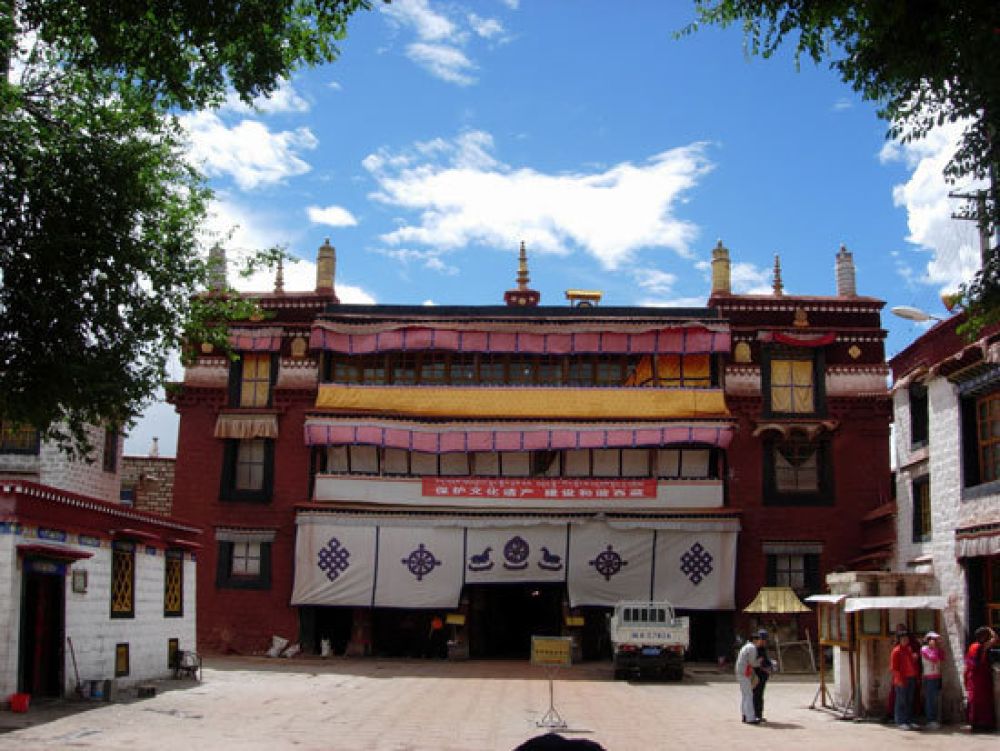

The Ramoche Temple is a significant historical and cultural monument in Lhasa, the capital of Tibet, China. Established during the Tang Dynasty, it is considered to be one of the most important temples in the city, complementing the grandeur of its sister temple, the Jokhang. Ramoche Temple is renowned for housing sacred relics and statues, including a highly revered statue of the Jowo Mikyö Dorje, representing the young Buddha aged eight, which was brought to Tibet by the Chinese Princess Wencheng, one of the wives of Songtsen Gampo, a Tibetan king.
Initially constructed in the 7th century, the Ramoche Temple has experienced several restorations and reconstructions throughout its history due to damages from natural disasters and cultural revolutions. Despite this, it still attracts thousands of pilgrims and tourists globally every year. The temple's architecture is a harmonious blend of Tibetan and Tang Dynasty design, a representation of the historical union between Tibet and China.
The history of tourism at Ramoche Temple is linked to its religious significance and its standing within the heart of Lhasan culture. While originally a pilgrimage site, the interest of global travelers began to grow substantially in the latter half of the 20th century as the boundaries for international tourism in China expanded.
In recent years, Ramoche Temple has become a popular stop on the tourist circuit in Lhasa due to its rich cultural heritage and tranquil atmosphere. With the rise of cultural tourism, visitors are increasingly seeking authentic experiences and a deeper understanding of local traditions and beliefs. The temple's spiritual ambiance provides an ideal setting for those looking to immerse themselves in the cultural fabric of Tibet.
With the advent of social media and digital technology, virtual tours and online photo galleries have also emerged as a way for people around the world to explore the temple remotely. However, the unique feeling of visiting the sacred site in person continues to be a major draw for both pilgrims and curiosity-driven travelers alike.
Today, sustainable tourism practices are being encouraged in the region to preserve the temple’s historical and cultural significance. Visitors to the Ramoche Temple can contribute to these efforts by engaging with the local community in a respectful manner and by following guidelines that help minimize their environmental impact on the site.